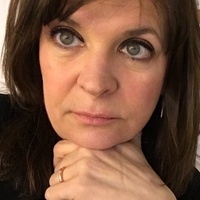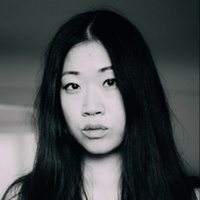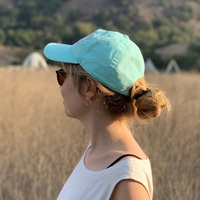Year End: On collaborating with the universe
At this time last December, I wrote a year-end piece for The Creative Independent called On the manifestation of new creative spaces. In it, I talked about how I had this vision for starting an internet-infused creative space in the woods—an undertaking that, despite being wholeheartedly committed to, I had made no tangible progress towards. It was still a fake idea.
At that time, I remember being frustrated that something which felt so urgent to me could feel so far off, and so hard to yank from my imagination into reality. There were just so many steps involved, and too many factors that seemed beyond my control, all of which combined to create a swirling mind matrix of self-doubt, confusion, and ultimately, inaction.
I wondered: how did others manage to pull complex and nuanced creative mirages out of thin air, into a firm and physical entity that other people could see and get behind? What needed to happen for me to learn how to do this, too?
Also at this time last year, I had just started as TCI’s Creative Content Director. I’m very lucky to have joined the team right at a point when I needed so much wisdom about how to start something new, how to make time for creative work, and how to develop a process. As I dove into editing interviews, commissioning guides, and collaborating on the overall resource that is our site, I was obsessed with this concept of how you actually bring something so big and messy to life. I became somewhat of a double agent, hoarding bits of knowledge as I worked, always on the lookout for anything that could help my quest to bring this dreamy creative space to life.
As I absorbed and internalized the words of countless TCI interviewees and contributors, one thing that began to stand out to me was how many people referenced this notion of a creative idea being its own entity that wants to come to life. It was almost this approach of treating your creative vision as a collaborative force sent from the universe which, if you listened patiently enough, was capable of guiding you forward bit by bit.
As I continued to work for TCI and develop the creative-space-in-the-woods plan on the side with my husband and collaborator, I decided to commit to this approach of just trusting the vision, diligently chipping away at things as they felt doable, and being confident that it would all begin to materialize. At some point, this approach started to work for us. I won’t go into the details here, but the space that used to only exist in my head is now actually a real thing in the world. Many parts of it are still somewhat fake, but it’s way, way more real than it was at this time last year (here’s proof).
I’ve learned a lot over the past year. Mainly, I see that the universe really does seem to work in mysterious (but ultimately deliberate) ways. And just maybe, creativity is more magic than anything else.
Below are a few of those bits of wisdom I’ve hoarded over the year that helped me be patient, trust the process, and discover this new way of working collaboratively with the universe. I hope it helps you make something real, too.
I think I have kind of handed myself over, in a certain way, to the universe, in the sense that I really just am following some kind of feeling that this is what I’m supposed to be doing. That is the basis for everything I’ve ever decided to do.
I’m a big believer in process. The longer I edit films, the more firmly I feel that if you follow the process, the film will come together.
I love it when an artwork tells you what it needs and has a life of its own. I definitely experience that when I make things. I like having a bunch of different inputs happening simultaneously, when work just sort of appears.
[Starting Basilica Hudson] was a totally crazy idea, and it’s still kind of a blind spot in my mind as to how we actually ended up taking it on. Other than the building was so unbelievably beautiful and we were living a few blocks away. I guess it seemed like destiny calling—that’s all I can describe it as, because logically, it didn’t fit with any plan that I or Tony ever had.
I still try to maintain that aspect of songwriting, where it’s kind of spontaneous and has a life of its own. A big part of songwriting for me is driving around in my car and listening to a demo where I don’t have a completed lyric and just hoping that whatever it’s going to be drops out of the sky and hits me square between the eyes.
Building on a habit on a small scale helped me comprehend that I actually could find the time in my day to put in the work. By only increasing the habit by small increments, the progress felt meaningful and manageable… Remember the long game. You can chip away at creative work and over time, it will add up.
Healing, for me, means aligning. It means aligning with a source, with your own rhythm, with your destiny and your vision. Often we are afraid. We’re just full of fears, full of doubts, full of insecurities, and we’re unable to manifest our vision because we are broken inside. When you’re broken you give birth to broken dreams. So healing is how to allow a flow of infinite creative energy to move through you, with you, and for it to work as you.
I’m so scared all the time. I’m constantly bargaining with the universe that it not take away this thing, and if it does, I have to find some serenity and surrender.
[Squash 73] started as a space to have rehearsals for our productions and for our offices. Slowly the space began to have a life of its own, and there was no point in trying to control it. It just grew, and keeps growing. I guess I’ve realized that you have to learn how to handle and live with change, and to enjoy the way things are always evolving.
I used to think that there was one right path—or one best way for things to happen—and I just had to work towards that. But over the years, I have come to understand that there are so many ways for things to work, you just have to be open to what they might be.
When there’s something big I want to have happen, I tend to have it on a list—or at least I have it in my mind—and then I keep chipping away at it. So if I’m trying to get from A to B, I’ll think about it in terms of getting to “B and a half.” I like to visualize things in micro steps.
Eventually, editing happens once I run out of steam, once I surrender. I’ve had luck thinking of my books as playlists/mixtapes and just sequencing them by feel. Print it out, read it, and then not be afraid to move things around. Delete big chunks of things that don’t fit. When you move things around, you make room for whatever comes in at the 11th hour.
When ideas come to me, they hit me really hard and I’m struck by them. Sometimes I have to learn how to turn my brain off because I’ll spiral, but when I do that with an idea, I know that it’s sticking. I’ll usually spiral for a week, step away from it for a month, then I’ll come back and be like, “What makes sense?”
I often touch upon architectural training as being this petri dish of how to have a creative working life. There was an old professor of mine that said students were either turtles or rabbits, and that I was a rabbit and I needed to learn how to be a turtle. What he meant: Rabbits were these manic people who would become really inspired by a lecture or a book or something. Because of this, every few weeks when you have to present your work to a jury, you always have a completely different project to show. You leapfrog from idea to idea. Everyone wanted to be a turtle—people who had these long-trajectory ideas that developed slowly and organically. At the time of their final critique, they’d always have a master work that they’d created over time. It’s just hard to do that for me, but I do aspire to be a turtle. I’m getting better at deploying ideas slowly and strategically.
When I write in isolation, I’m approaching everything much more in my head, and from a more intellectual perspective. But when I get into the room with the actors and a director and a dramaturg—and then the family whose story we’re telling—everything starts to shift. To me, everything starts to happen much more organically. I don’t know how to explain it. It’s just like it all goes into alignment.
How do you keep things moving? Do you feel like you’re constantly pushing DiMoDA forward, or do you feel like things just evolve organically as you go?
It’s a little bit of both. The analogy of being a captain of a ship is really good, because with a ship, you’re subjected to the will of the sea. But you also have a chance to move the sails around to catch the right winds.
So yeah–it will move on its own, but you gotta push it, too, you know?
Willa Köerner is the Creative Content Director of this very website, where some of her favorite projects have been commissioning how-to guides, producing zines and other publications, and working on special projects like our report on the financial state of artists today. Before TCI, Willa directed editorial and content strategy at Kickstarter, and before that, she managed digital engagement at the San Francisco Museum of Modern Art. She is a NEW INC mentor, and was formerly a founding member of Grey Area Art + Technology’s Cultural Incubator. She’s currently working with her partner, Daniel Morgan, to establish The Strange Foundation, an internet-infused creative space in New York’s Catskill Mountains.
















